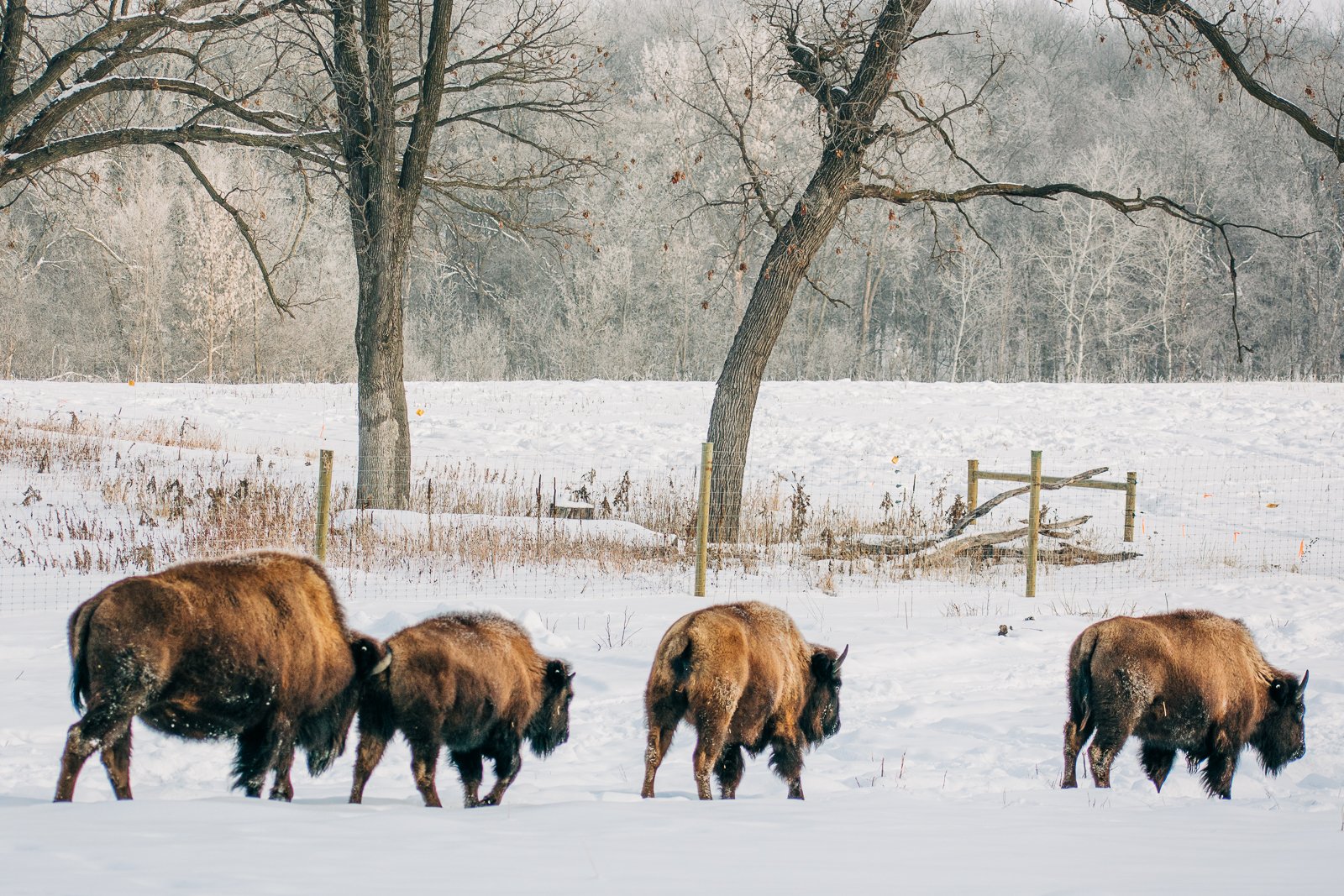Bison Prairie
Written by: Scott Hagen, Natural Resources Specialist, Dakota County
Photos Courtesy of Shannon Montante
“By the 1880s, over 30 million buffalo had been slaughtered and buffalo were nearly exterminated. At the Medicine Lodge Treaty Council of 1867, the great Kiowa chief, Satanta noted, ‘a long time ago this land belonged to our fathers but when I go up to the river I see a camp of soldiers, and they are cutting my wood down, or killing my buffalo. I don’t like that, and when I see it my heart feels like bursting with sorrow.’””
Spring Lake Park Reserve is a 1,097-acre park that is west of Hastings along the Mississippi River. This beautiful park is made up of a mosaic of forested ravines, oak woodlands, savannas and prairies and has been stewarded by indigenous societies for at least 8,000 years. Wildlife of the park is varied and rich, including many species of migrating and breeding birds; small mammals such as shrews and mice; several species of bats; multitudes of invertebrates such as rusty patched bumble bees and leadplant flower moths; reptiles and amphibians such as red-bellied snakes and tree frogs; and large mammals such as whitetail deer, fisher, and badger along with the most recent addition of bison.
Eight bison were released into the park in the fall of 2022 and are roaming their new home in the 150-acre Bison Prairie. Bison were a keystone species throughout North American prairies and were an integral part of the prairie ecosystem that is missing from most prairies across the continent.
Dakota County and the National Park Service have partnered with Mississippi Park Connection to enhance these prairies with native flowering prairie plants with high pollinator value which will enhance the habitat for several pollinator species, including rare species such as rusty patched bumble bee, leadplant flower moth and regal fritillary along with many more common pollinator species. These projects will help bring these prairies back to what they had been in the past prior to European settlement.
Photo Courtesy of Shannon Montante
This work funded through the Conservation Partners Legacy (CPL) Grant Program at the Minnesota Department of Natural Resources. CPL funds conservation projects that restore, enhance, or protect forests, wetlands, prairies, and habitat for fish, game, and wildlife in Minnesota. Support for volunteer habitat restoration at the bison prairie is also made possible through the generous support of Mississippi Park Connection members.
In partnership with:



